Toronto Rathayatra Inspires Second Gen Leadership
By Madhava Smullen | Aug 11, 2016
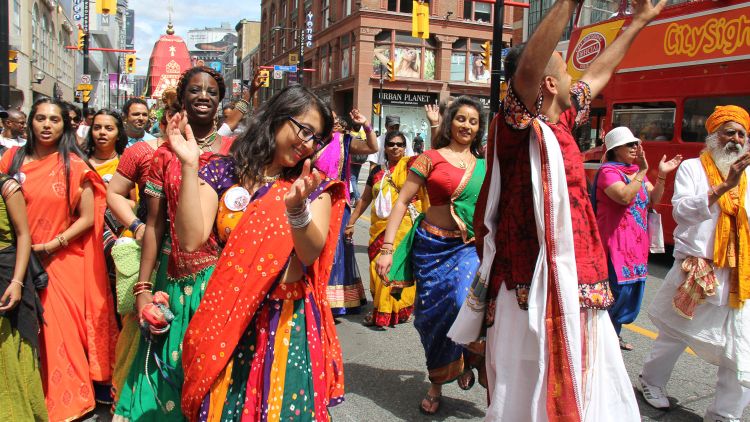
Growing every year in size and popularity under a second generation team, Toronto Rathayatra has inspired younger devotees to take on more and more leadership in their community, and senior devotees to hand more and more to them.
Seventeen years ago, when he was only eighteen, just one second generation devotee, Kevala Bhakti Das, became part of the Rathayatra organization team. Today, the festival is put on by thirty-two younger devotees from high school kids to thirty-somethings, heading up twenty different departments.
This year’s Rathayatra, Toronto’s 44th annual, was the biggest yet. It began with a ‘pre-festival’ on June 26th, giving the public a taster of what to expect three weeks before the parade.
“It was at Yonge-Dandas Square, Toronto’s answer to Times Square, where up to 100,000 people pass by on any given day,” says Kevala Bhakti, who is now 35 and serves as the festival chairperson. “We had kirtan, yoga, cooking demos, vendors and more for them to experience.”
The main festival then kicked off with a twelve-hour kirtan on Friday July 15th at ISKCON Toronto, featuring B.B. Govinda Swami, Agnideva Das, Amala Kirtan, and more.

Amala Kirtan Das leads the chanting at the 12-hour kirtan
On Saturday, three forty-foot plus chariots carrying Jagannath, Baladeva and Subhadra were pulled in a parade down Yonge Street, famous for being the longest street in the world. Over five thousand devotees, congregation and public participated, with devotees passing out flyers, books and Rathayatra coupons to the thousands more spectators.
With a designated kirtan group for each chariot, the chanting roared on, reaching fever pitch as their Lordships passed through the Toronto Tunnel, a railway line underpass that makes the acoustics explode and the devotees go wild.
After the parade, festivalgoers took a ferry to Centre Island, where the largest numbers yet – about 40,000 people – enjoyed two days of celebrations geared towards the general public.
“The first thing people saw when they came off the ferry was our Mystical Temple Tent, with Jagannath, Baladeva, Subhadra and Srila Prabhupada,” says festival PR head Tarun Kandala, 33, who has been with the team for eight years. “It’s decorated with fabric, chandeliers and drums to create the feel of a Vedic temple, and has non-stop kirtan. People really get transformed when they go there.”
Meanwhile 30,000 plates of a free prasadam feast were served out, and innovative book distribution techniques led to a major increase in the amount of Srila Prabhupada’s books sold. There was a special teenagers-only tent called “The Bhakti Cloud,” a gopi dots, tilak and saris tent, and a spiritual ecology tent, explaining devotees’ contribution to the environmental issues that are so pressing today.
“We also expanded our stage program this year from the Indian dances it used to mainly consist of,” says arts and culture manager Gita, 29, who is going into her third year on the Rathayatra team. “One unique show featured artists painting pictures of Krishna live onstage, accompanied by live kirtan and readings of the story in the painting. At the end of the show, people were practically falling over themselves to buy the painting, and it was sold immediately after.”
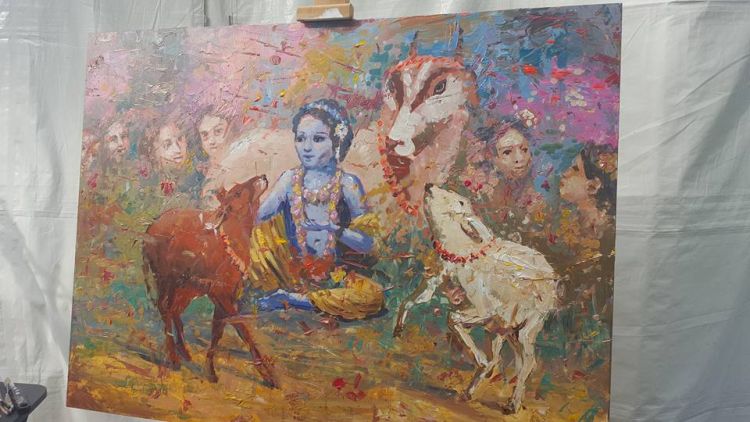
The painting of Krishna created live at Toronto Rathayatra
Another highlight was a fashion show in which devotees explained the meaning behind different elements of Vaishnava dress, such as why men wear dhotis and women wear saris, why celibate monks wear saffron and married men wear white, and why sannyasis and priests on the altar dress in certain ways. There were then live demonstrations of how to put on the different items of clothing, which drew rounds of applause from the audience.
As well as these unique shows, there was also of course kirtan and Bharatanatyam dance with Anapayini, a Toronto Rathayatra favorite.
As if that wasn’t enough, there was the biggest ever Yoga Meltdown, a festival within a festival which saw a dozen Toronto yoga studios offering free yoga classes outdoors to nearly one thousand people. While yoga teachers taught the physical practice of yoga, devotees handled the spiritual element. They provided a mantra meditation tent for learning japa and philosophy, and vegan cooking demos with classes on the importance of one’s consciousness while preparing meals.
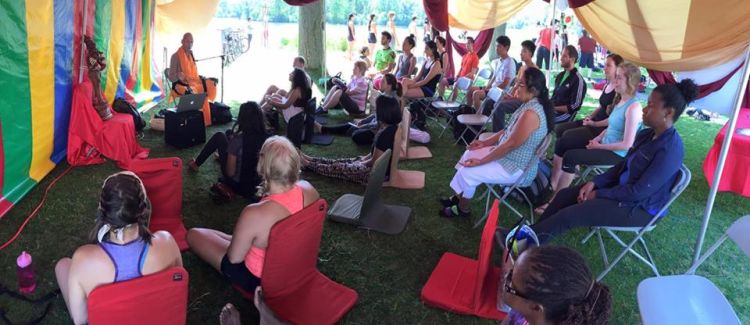
Guiding new chanters in the japa meditation tent
All these creative outreach ideas were generated by second generation devotees from high school kids to university students and young professionals; all of them nurtured, in an encouraging atmosphere, to bring their own ideas to the table and run with them.
This has created a mood where young devotees are so enthusiastic to serve that they’re fighting for a space on the Rathayatra team. But that’s not all. They’re also taking the services they’ve become expert at providing during Rathayatras on to leadership at the Toronto temple.
High school students are organizing ISKCON Toronto’s biggest festivals, such as Janmastami, and other second generation devotees are heading up the community’s massive book distribution team.
Meanwhile four years ago, Toronto became perhaps ISKCON’s first temple to hand over its overall management to second generation devotees like Kevala Bhakti and Rukmini Dasi, who now make up the temple council that serves in place of a temple president.
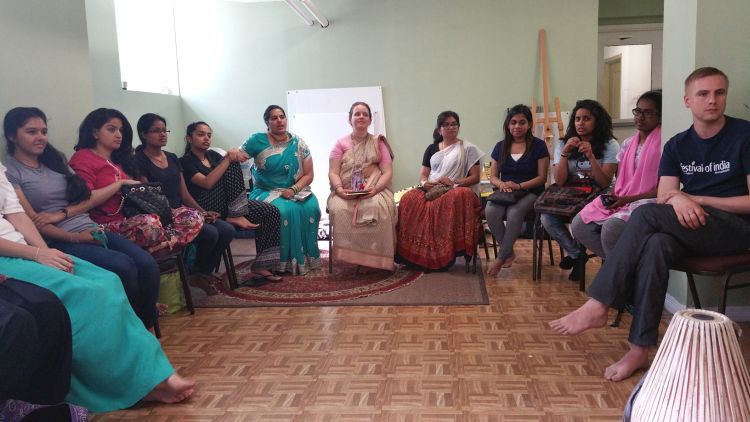
The Toronto Rathayatra team in the midst of a planning meeting
“We wouldn’t be there if it wasn’t for the senior devotees who have served in the temple management for many years, like Bhaktimarga Swami, Praharana mataji, Krishna Das Prabhu, and Rupanuga Prabhu,” says Rukmini, 27, who has been on the Rathayatra committee for a decade. “They encouraged us to get going, allowed us the space to explore and try new things, and fail, and try again. They’ve created such an encouraging culture — almost anything that a young devotee wants to try to do, they’re welcome to try to do it.”
Kevala and Rukmini hope that senior devotees at other ISKCON temples follow suit and give their young devotees a chance to take on responsibilities too.
But that empowerment begins, they feel, with the second generation developing a great relationship with the senior devotees in their community.
“That relationship starts with serving your senior devotees,” Kevala says. “And then hopefully they will reciprocate by offering opportunities. Take on those services, bring your full heart, body, mind and soul into them, and always remain eternally thankful to the senior devotees and their guidance.”
The resulting service, as seen in Toronto, can give young devotees an opportunity to use their skills, discover what they’re interested in, and bring talents they’ve developed in service on to their professional lives too – many second gen have gotten jobs on the strength of Rathayatra experience listed in their resume.
Beyond that, of course, is the spiritual benefit.
“When you serve the Lord, face challenges in service with your devotee peers and make friends through it, that can really strengthen your Krishna consciousness,” says Kevala Bhakti. “We’ve seen it happen year after year. Young devotees become much more serious in their Krishna consciousness, because they have that opportunity to serve together.”
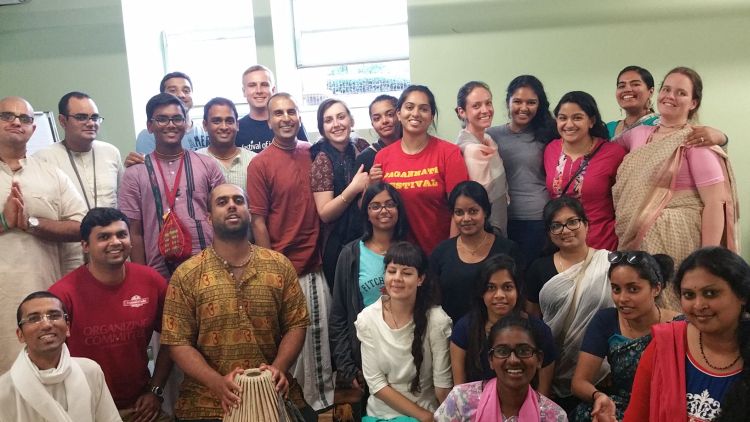
The team, bonded and happy in service














